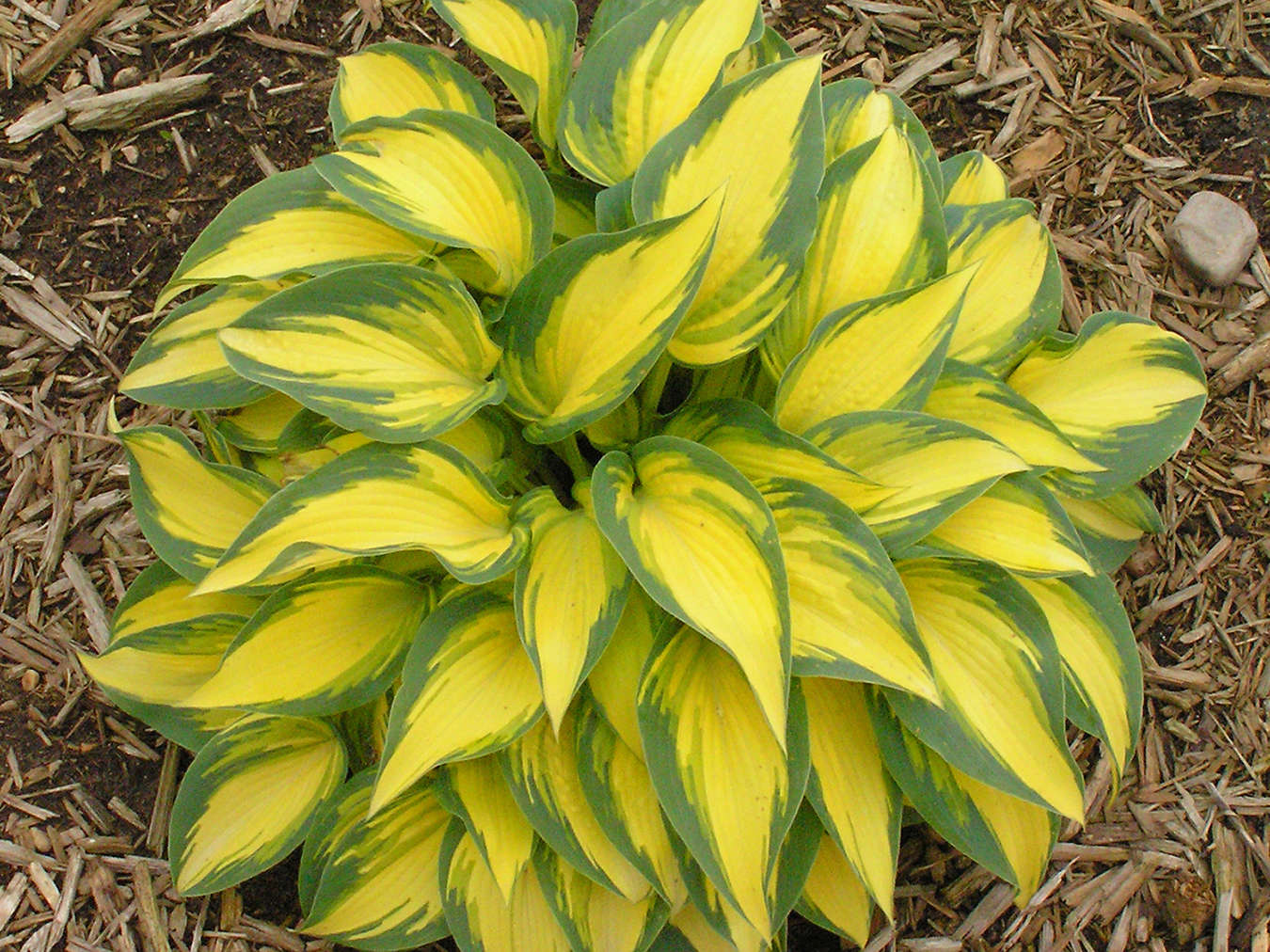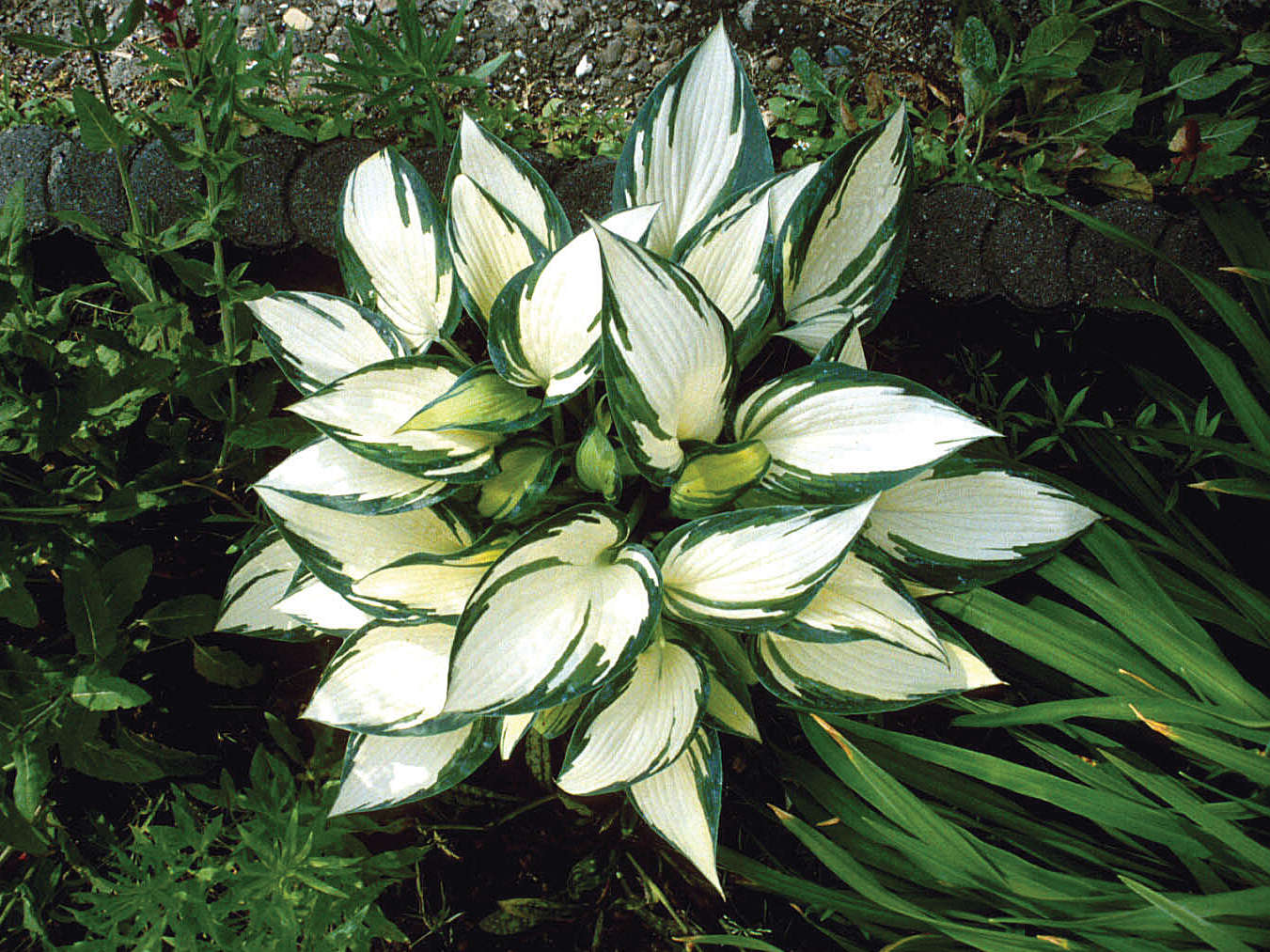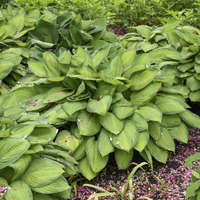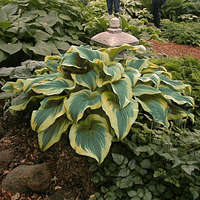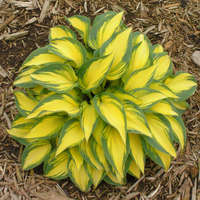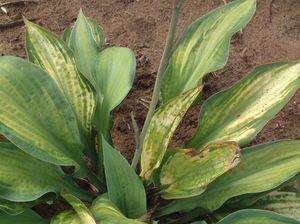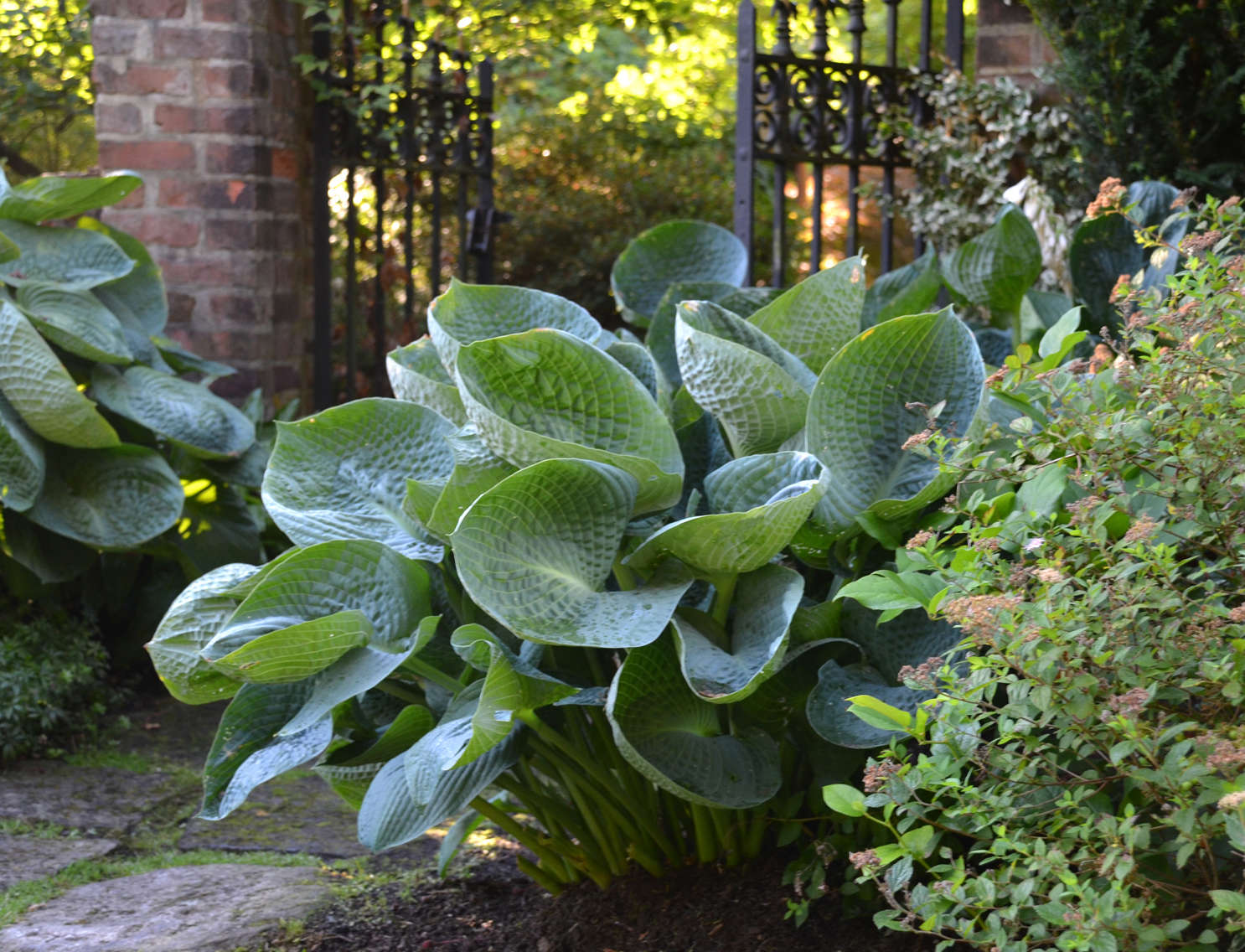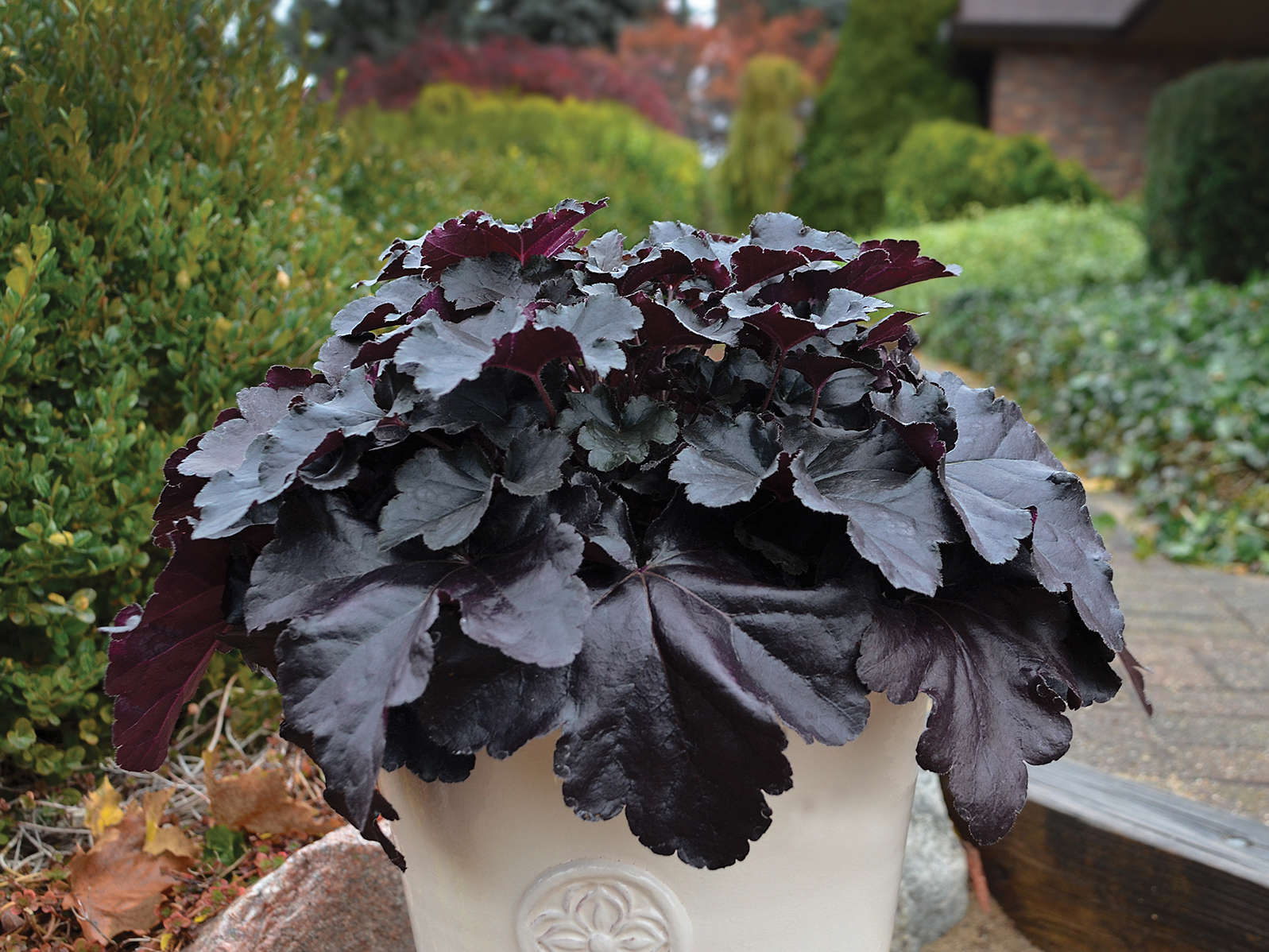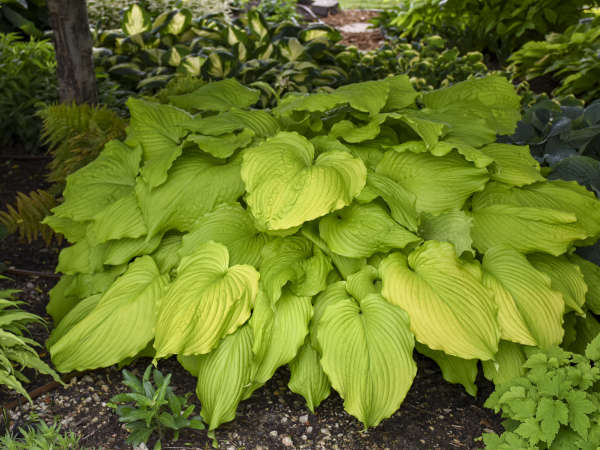Hosta Color Changes
07/16/2015
Hostas have become extremely popular, due in great part to their wide spectrum of colors and variegations. Few other groups of plants have the same variety of foliage hues, which is important because foliage is the backbone of the landscape. Hosta leaves range in color from light buttery yellow to deep forest green to powdery blue, and a host of variegated forms are also available. Recently, hosta breeders have been breeding for red coloring in the stems and leaves.
One of the most fascinating things about hosta foliage coloring is that it often changes throughout the growing season. Some pigments lighten or brighten, while others become more green or chartreuse. These changes seem to be affected by heat, and indirectly by sunlight. Some change very quickly, while others are quite sluggish. The more heat to which a hosta is exposed, the faster the color change occurs. Plants changing the fastest seem to be those grown in a greenhouse in pots on elevated benches. Similarly, plants grown in southern gardens progress through the changes faster than hostas in northern gardens.
Hostas go through three main types of color changes
- Viridescent color change — The root word of viridescent means green, so a viridescent hosta becomes more green as the season progresses. It may start off yellow, chartreuse, whitish-green, and then darken to green.
- Lutescent color change — Hostas that are lutescent lighten as the season progresses. This may mean a shift from chartreuse to yellow or a shift from dark to light green.
- Albescent color change — The word alba means white, and hostas that whiten from yellow or chartreuse to white are called albescent.
Blue hosta color is different because even though it looks blue, it is not actually blue. It is the waxy coating on the leaf surface which causes light to be reflected in such a way that the leaves appear blue. Depending on the amount of chlorophyll in the actual leaf, some blues can be very light and some can be much darker. Most blue-leafed hostas become green at some time during the growing season when their waxy surface is not as reflective as it once was. The wax seems to almost melt off with exposure to hot sun, harsh watering, or some pesticide sprays. Once the wax is gone, the same leaves will not regain their blue hue that year.To achieve the best blue leaf color in a hosta, select newer and improved blue varieties that have excellent waxy leaves. Plant them where they will receive ample indirect or lightly filtered light. Early morning sun is best in most regions, but it is most important to remember to keep the leaves protected from the sun during the hottest parts of the day. Take care not to rub the wax off the leaves by avoiding high pressure irrigation and petroleum-based pesticides.
To help you understand how hostas experience color changes, let's look at some examples of a few popular varieties.
- Hosta montana 'Aureomarginata' is an older variety that uses Latin in its name to describe its variegation. "Aureo" comes from the Latin word aureus meaning golden while "marginata" means margin. This would lead one to believe that this is a green hosta with a gold margin. Though it does exhibit a yellowish margin for a couple weeks in early spring, it quickly turns creamy white when the leaves completely unfurl. Often the margin lightens even further to white in summer. Thus you can see how the name 'Aureomarginata' could be deceiving.
- Another springtime favorite is Hosta 'Sea Fire'. As its name implies, this hosta is ablaze with color in the springtime. Just when the daffodils are blooming, 'Sea Fire' has emerged with nearly the same light yellow coloring. Few plants can rival its excitement as it emerges from a long winter sleep. However, as the warmer weather of summer approaches, its leaves turn from yellow to lush tropical green.
- People familiar with the archetypal variegated Hosta 'Gold Standard' recognize the characteristic parchment gold center of its leaves. Amazingly though, its early spring color would not remind you of a plant named 'Gold Standard', for there is no gold to it at all when the leaves first emerge. Rather, the young leaves are green or chartreuse with a deep green margin. The golden color is not achieved until later in the season.
- Another classic, Hosta 'Undulata Mediopicta', is described as having attractive green leaves with white centers. However, the heat of summer often causes the white center to darken, initially producing a green frosting or fogging and eventually darkening to all-green.
- Hosta 'Remember Me' (pictured above) really requires two photographs to tell its whole story. When the plant emerges in spring, its leaves are bright gold surrounded by blue-green borders. By midsummer however, the center of the leaves brighten to ivory or near white. The change is so drastic that many people would not even recognize the plant if they were familiar with it only in one season.
Though not all hostas are chameleons, changing their leaf colors during the season, most are. Perhaps the only hostas that do not exhibit any kind of color change are those that are solid green. Perhaps this is one of the things that makes them so unique and explains why the thousands of hosta varieties are so fascinating and popular with today's gardeners and collectors.
